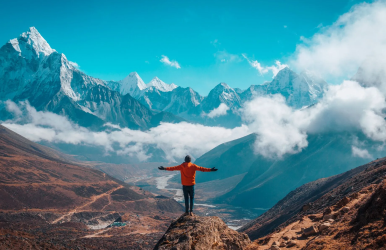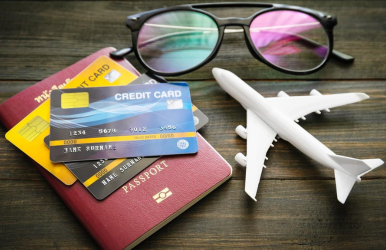Best Dark Tourism In Canada: It Cannot Get Gloomier Than This
BY Sibashree Sep 30, 2024
Even if you don’t believe it, Canada has many locations and abandoned sites with ghostly stories and a dark history. Haunted places like the Fort Edmonton Park and Princess Theatre in Edmonton or the Disaster-struck Alberta Frank Slide are a few examples of how dark tourism in Canada offers a vivid experience. Further, sites like Asbestos (now Val-des-Sources) show how mining asbestos has caused long-term health hazards to Canadian people and victims beyond borders. Also, there is Halifax, where an explosion took the lives of around 2000 people in 1917. So, let’s explore the sites that are scary and unusual. THESE Are The Best Sites For Dark Tourism In Canada In 2020, the small town of Asbestos changed its name to Val-des-Sources or the Valley of the Springs. However, the name change could not wipe off the history of diseases and suffering as it once had the largest asbestos mine in the world. So, like the nuclear plantations that pushed numerous human lives to death, Asbestos in Canada was also a town of breathing poison. Today, it is one of the most prominent destinations for dark tourism in Canada. Regarding dark tourism, Canada has many sites that tell the tale of human tragedy or are infamous for spooky experiences. Let me share brief accounts on these sites If you want to walk into the shadows. Asbestos Asbestos, a town in southern Quebec, once epitomized health-hazard horrors. Asbestos mining is not done here today, but breathing problems and other hazards caused by that “magic or miracle mineral” persist in the town. The town had an open-pit mine for mining chrysotile asbestos, and it boomed for a century. However, in 2011, the mine stopped its operations. Unfortunately, the use of asbestos became huge by the mid-20th century. It was a chosen material for roofing, insulation, and fireproofing. Slowly, it was discovered to cause many health hazards for people working in the industry or residing near an asbestos plant or mine. Despite the drop in global demand and many other countries banning the use, import, and export of asbestos, Canada kept at it until 2018. Justin Trudeau, the Canadian Prime Minister, banned the use, sale, import, and export of asbestos in 2016, and the ban came into effect in 2018. Nevertheless, today, the town of Asbestos, or Val-des-Sources, is a popular dark tourism site with an abandoned mine. The mine now looks like a gigantic playground. Halifax In June 2016, the Canadian Government designated the Halifax explosion as a “national historic event.” Halifax was a busy port for the loading and unloading of food, aid, relief, and other essentials during World War I. On an unfortunate day, 6 December 1917, the French ship SS Mont-Blanc and SS Imo, a Norwegian ship, collided. Both were carrying explosives, and the collision caused a major explosion. Almost 2000 people died, and many were injured, registering it as the biggest manmade explosion before the atomic bomb disaster. This human tragedy, however, was a milestone in changing the medical scenario of Halifax. The improvement in pediatric surgeries and the establishment of the Canadian National Institute for the Blind were the two most prominent examples in this regard. Today, the Fort Needham Memorial Park is a prominent site for dark tourism in Canada. The commemorative plaque there gives you a brief account of the incident. Also, the Halifax Explosion Memorial Bell Tower here has an annual memorial service for the explosion on 6th December. Edmonton: The Hub Of Dark Tourism In Canada Edmonton has many destinations for paranormal encounters, and Fort Edmonton Park is one of them. At the paranormal tours here, you can explore many paranormal equipment and encounter many experts for some otherworldly experience. You can also visit the haunted buildings of Edmonton. The stories of these buildings will scare you to the bit. Also, you never know when an unknown entity gets close to you, and you can feel the breath. Princess Theater: The Most Haunted Place In Edmonton Another important haunted landmark here is the Princess Theater. In the 1920s, the theater was about to have an additional rental space. A bride-to-be rented that space, but her fiance left her on their wedding day. So, she committed suicide by hanging by the neck. When the staff of the hotel found her, her body was swinging from the rope. She was wearing a beautiful wedding gown. Legends have it that her ghostly figure is still seen at the theater. She is seen climbing down the stairs, wandering the theater halls, and moving around the projection room. Historic Mackay Avenue School Archives & Museum: Meet The Restless Spirit Moreover, when in Edmonton to experience haunted activities, Historic Mackay Avenue School Archives & Museum should be your destination. Many people have experienced a sense of choking, being grabbed, or disturbed at this place. It is said that a construction worker called Peter fell from a third-floor window during renovation work in 1912. His restless spirit still lives here, and many informal investigations have captured strange silhouettes and erratic electromagnetic fields recorded here, which also vouch for paranormal activities here. The Museum of Fear and Wonder https://www.instagram.com/p/CxsrNX5L7Al/?hl=en&img_index=1 It is unusual to find a rural museum of horror in the Southern Alberta rural valleys. It is eerie to the bone with Ouija boards and ventriloquist dummies. The little jack o’lantern dollhouse, Kiddo, leather doll, and the haunted doll, Robertina, are the most prominent collectibles here. Also, the artificial human body parts and life-like human bodywork made of wax are the creepiest things you will come across. All the collectibles in the museum are carefully placed to create a sense of fear. The aim is to show how people emotionally react to certain things. Also, Brendan, one of the founders of the museum, does not believe that things can be haunted or they can be related to paranormal activities. According to him, things, at the most, can cause a sense of uneasiness. Thus, all the items in the museum provoke discussion about the psychological impacts of different objects on different people. For example, an adorable doll can be an object of fear or discomfort for a person who has suffered childhood trauma. Even dolls or toys can get old and develop an eerie appearance through wear and tear. They can look messy or dirty, creating repulsive feelings. Thus, the Museum of Fear and Wonder is not about paranormal experiences or activities. It is a place to understand the human psychology behind fear and wonder. Saskatchewan Ghost Towns – Insinger As India has Kuldhara, Canada has Saskatchewan, where time stands still, and the deserted town lives in the shadow of the past. Unbearable winter in the Prairie region made the residents desert the place. In the 1800s, many European people came to Canada and got free land to set up a working farm within a year. Thus, this prairie became a bustling residence of farmers and their families. Visiting Saskatchewan And Its Many Wonders In Saskatchewan, you will notice a Ukrainian Orthodox Church. The old church with a domed roof stands as a witness to the bygone era. Do you know that Saskatchewan has so many ghost towns (more than 30) that there is a “Ghost Town Trail” here? You can drive around the route to explore the towns individually. As you walk through the ghost towns of Saskatchewan, you will never feel alone. There is a constant feeling of someone following or walking with you. Even looking at the most dilapidated structure, you will feel like someone will come out of it any moment. I had plans to get inside some of the structures. However, a knotty feeling in my stomach stopped me. As hours passed, I started feeling anxious and left the place. The Ghost Towns of Alberta – Rowley If I were to decide, I would name Alberta the capital of dark tourism in Canada. If the haunted places of Edmonton are not enough, you can explore Rowley. The small hamlet of Rowley in Alberta has deserted railway cars and buildings. However, it also tells some inspiring stories. Rowley used to be a town with 500 inhabitants in the 1920s. The Great Depression hit the place, making the residents leave. A lack of rain led to the drying up of the crops.Moreover, a fire destroyed many of the small buildings.However, only eight surviving residents of Rowley did a commendable job of transforming Rowley into a heritage site in the 1980s. They transformed some of the buildings. Very few people know that movies like Bye Bye Blues or Legends of the Fall have some of these buildings as their locations. Visit Rowley in the summer, as it offers free tours in the season. Also, the pizza parties here on the last Saturday of every month are fun! These pizza parties are fundraisers for restoring the buildings and preserving history here. THESE Are The Places You Can’t Miss At Rowley The historical buildings to visit in the ghost town of Rowley are: Rowley Trading Post (Built in the 1920s) A Printing Press A School Now Abandoned Former Hospital Abandoned Railway Tracks A Saloon with Swinging Doors (Dedicated to the memory of a previous owner) Municipality of Starland Office Canada National Telegraphs Building Along with these historical structures, you will also find a building labeled Funeral Home and Embalming. Going inside, you will find paraphernalia and historical artifacts used in Bye Bye Blues. The only thing I find creepy about Rowley is the mannequins. The residents have used mannequins in many places to recreate the scenarios of the 1920s. So, if you have a faint heart, avoid peeping through the glass windows of the historical buildings. It is not very pleasant to find a mannequin looking back at you. However, overall, the experience was like being at the location of a classic Western movie. Alberta Frank Slide Alberta Frank Slide is one of the most tragic spots for dark tourism in Canada. 121 years ago, this place witnessed the deadliest slide in Canada. The tragic incident took the lives of 100 people. What Happened At Alberta Frank Slide? It was 4:10 am on 29th April 1903. The 600 people in the mining community were still asleep as Mount Turtle crumbled down and released 110 million metric tonnes of rock. This incident took the lives of around 100 people. Even today, if you pass through Highway 3 of Alberta or visit Frank Slide, you will find bodies and various belongings still buried under rocks. “It was loud enough they could hear it up by the town of Cochrane, 200 kilometers away,” said Joey Ambrosi, the facility supervisor of the Alberta Frank Slide Interpretive Center. This interpretive center, built in 1985, tells the true stories of human tragedy and dismisses the myths around it. However, the intrigue around this biggest slide does not end here. The mountain moves a few kilometers from each other, and scientists suspect it will come down again. Having said that, there is still time for such an incident, and it will not be as deadly as the one that happened in 1903. When at Alberta Frank Slide, don’t forget to visit The Crowsnest Pass. A landslide and a mine explosion in 1910 badly hit the area. Again, at a stone’s throw away is the Hillcrest town where 189 miners died of a coal-dust explosion on 19th June 1914. Also read Top 10 Most Popular Paraguay Food That You Must Try. Top 13 Famous Wonders Of India That You Must Visit! [Updated 2024] Top Tips For Motorbike Rental In Phuket – A Guide To Exploring The Island On Two Wheels.





















